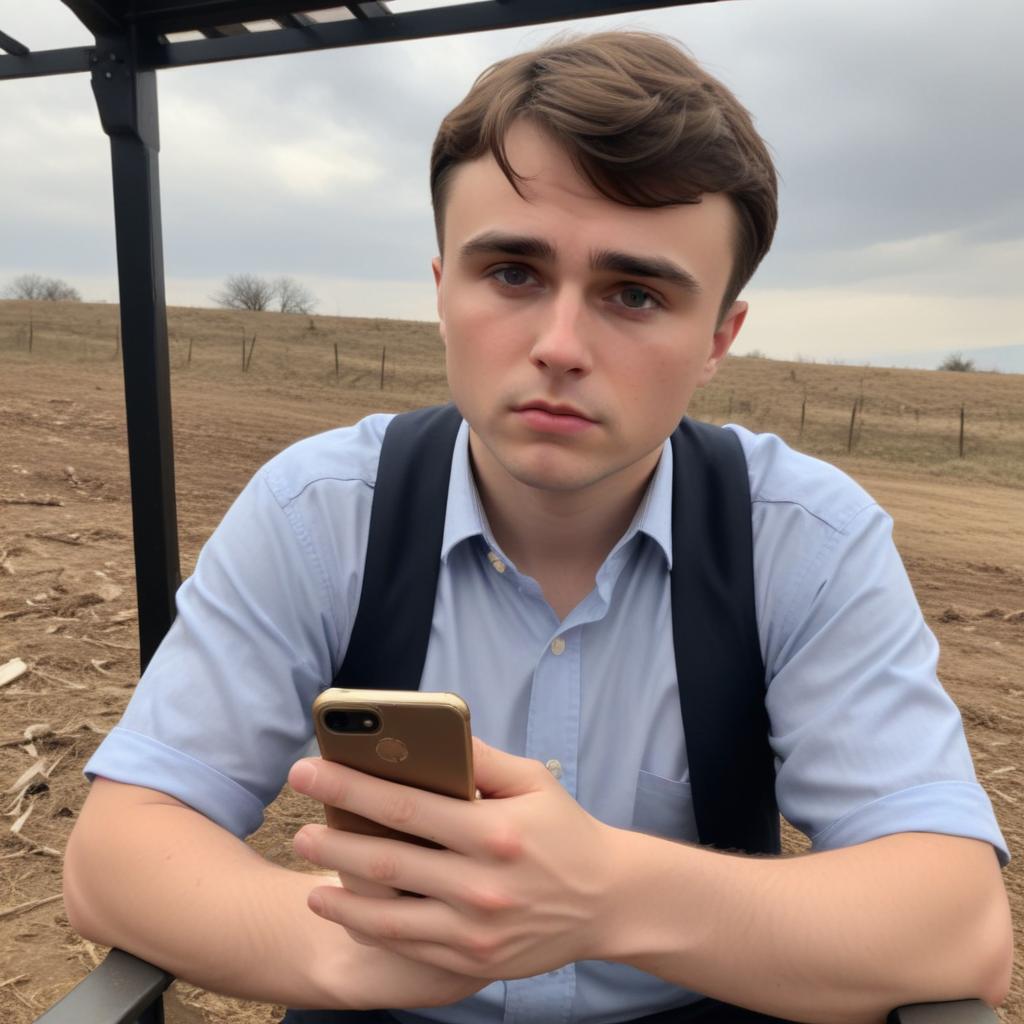Smartphones expose children to disturbing content and misinformation. A panel of seven experts offers crucial advice on how parents can talk to kids about upsetting news, graphic content, misinformation, and political polarization, emphasizing open communication and media literacy.
When rightwing commentator Charlie Kirk was killed last month, footage of his shooting spread rapidly across social media. Today, anyone with a smartphone can access gruesome videos and images – as well as troves of misinformation. Though some experts have been sounding the alarm about the potential harm of smartphones on children and teen’s mental health, the fact is most young people still have access to phones – and the often disturbing content that flows out of them. The Guardian spoke with seven experts on how best to speak with kids about upsetting content and news, at what age to start those conversations – and what to avoid. Panel of experts: Anya Kamenetz, journalist and publisher of The Golden Hour newsletter Eugene Beresin, MD, psychiatrist and executive director of the Clay Center for Young Healthy Minds at Massachusetts general hospital Tara Conley, assistant professor of media and journalism at Kent State University Tori Cordiano, PhD, Ohio-based licensed clinical psychologist Jill Murphy, chief content officer of Common Sense Media Ashley Rogers Berner, professor at Johns Hopkins University Holly Korbey, author of Building Better Citizens What’s the best way to talk to kids about bad news – whether it’s a public assassination, a school shooting or a climate-related disaster? Anya Kamenetz: First, find out what they already know or have heard. Kids are overhearing things at school and seeing snippets on social media, so it’s important that you know what they have heard. You can dispel any misconceptions with some clear facts. Look online together, to model balanced consumption of information. Once you’ve filled in some basics, ask if they have any questions. Then, ask how they are feeling about it. Eugene Beresin: Kids of all ages have three concerns. Am I safe? Are you taking care of me? How will this affect my life? So you want to ask what they’re worried about, listen, validate their feelings and be available for questions. Tara Conley: There are practical ways to create communication channels to talk to kids when the news is upsetting. For example, consider establishing a family group chat. Create online and offline spaces where a young person can feel part of a tight- knit group. What are the best ways to talk to kids about graphic content, like the shooting of Charlie Kirk? Tori Cordiano: I personally know a lot of teenagers who, without even realizing what they were looking at, stumbled into the [video of Kirk’s shooting] and were really shocked. Especially with younger kids, there may be some sense of: ‘I can’t even tell my parents because I wasn’t supposed to see in the first place.’ It’s important that they’re able to talk about it with a trusted adult. You might say: ‘You may not have known what you really were looking at, or you maybe did seek it out, and that’s understandable because you wanted to know what was going on. What we know is we don’t want to continue to seek out those sorts of videos and images, because they do have a lasting impact on our brain.’ Ashley Rogers Berner: When children hear about an assassination or other acts of political violence, it’s important to be truthful with them. Parents can reinforce the rules of democracy, such as that we deal with disagreements peacefully and without violence. They can reassure their children that the government’s job is to find and hold accountable any perpetrators of violent behavior, and that such violence is rare. How do you help kids navigate misinformation? Holly Korbey: Parents need to understand that when kids have phones, they have unending exposure to the worst things happening in the world, and almost immediately on TikTok and Instagram, the facts of what happened get twisted instantly. What’s more, political leaders are saying, ‘Don’t trust the news,’ so people are just so confused. A parent’s job can be to say: ‘Let’s just go over what the facts are. If you’ve heard something really scary, go to a journalistic outlet and see if that’s even right.’ Cordiano: Kids are drawn to phones because it’s an important way that they communicate with their peers and learn about their world. I don’t think we’re smart to just put that to the side. Instead we should think about the habits we want them to start developing at a young age around technology use: where they’re using their devices, when they’re using their devices, for how long they’re using their devices and what they’re accessing. I don’t think of this as a one-size-fits-all approach, but generally starting with more restrictions (fewer apps, including social media, and tighter time limits) can be helpful when kids first have access to a phone or tablet. For all kids, avoiding keeping devices in their bedroom overnight, or for younger kids, avoiding using their devices behind closed doors, is helpful. I often recommend Common Sense Media to families looking for resources on this topic. Conley: Instilling critical media literacy skills in children and young people early on – by helping them understand how media and technologies influence social behaviors and social life – goes a long way, said Conley. I offer parents/caregivers some tips here: Tips for Adults Supporting Kids Consuming Scary News. The American Academy of Pediatrics also provides information on How to Make a Family Media Plan. There’s so much vitriol and polarization in our politics. How do you handle those conversations? Korbey: I tell my kids that [no topic] is off limits. Students who are exposed to controversial topics and allowed to talk about them end up becoming more politically active later. We have arguments at the dinner table. I think that’s good. Jill Murphy: Kids and teens will have plenty of questions, and it may also be a launchpad for a deeper conversation about a political or cultural issue. Parents should remind kids of their values and points of view, while hearing what their kids are gravitating towards and wondering about. What should parents and caregivers avoid when talking to kids about the news? Kamentz: Avoid having TV news on in the background. I hate to say this because I used to work for NPR and grew up listening to it from the backseat, but depending on the story unfolding, you might want to limit that exposure as well. Depending on your kids’ age, you don’t necessarily have to volunteer lots of information when they have not asked. Kids take in information at their own pace and have widely varying developmental needs. Conley: It’s probably best to avoid pretending we know everything and can explain away upsetting news. Kids can tell. We owe them our humility, not hubris. How do you reassure kids when they’re concerned about very real risks to their own safety, such as climate change, school shootings, immigration raids and police violence? Conley: I was in college, a lot was going on in the world from 9/11 to Hurricane Katrina, to the BP oil spill, to the Great Recession. During that time, and before he passed away, my dad wrote me letters. Sometimes he’d offer guidance, sometimes he’d just offer thoughts of encouragement. I still have his letters. I pull them out whenever I need a reminder of our shared humanity. So, when talking with parents and educators, I offer a practical letter writing activity. Simply writing a letter to a young person in your life can go a long way. Cordiano: When a school shooting happens, it’s not our job to make them more upset about it. What we do want to make sure of is that they take safety drills at school seriously, and that they’re paying attention to the guidance that we get from the school. How do you reassure kids when you, as a parent, are afraid or upset by the news? Kamentz: Put on your own oxygen mask first, and make sure you have supportive adults to share your concerns with. Model healthy news consumption [by] avoiding doomscrolling before bed and maintaining family routines as a news-free zone. Conley: I encourage young people and adults to not only find the helpers (shoutout to Mr Fred Rogers) but also be a helper. Recent studies suggest giving support, for example through volunteering, helps us all cope and better deal with constant stressors. We feel better when we help others. When is the best age to start those conversations? Murphy: Kids and teens are exposed to news at a rapid rate, often hearing about events from influencers. Because of this, it’s best for parents to begin discussions with kids early, sharing age-appropriate information. Kamentz: The reality is we don’t always choose. I didn’t want to have to explain to my three-year-old that school was closed because of a global pandemic, and that she had to wear a mask and couldn’t go inside the supermarket, but that’s what happened, and I have a happy, healthy eight-year-old today.



